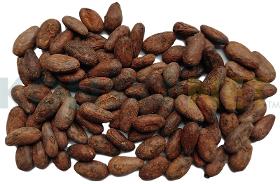- europages
- >
- COMPANIES - SUPPLIERS - SERVICE PROVIDERS
- >
- cocoa raw
Results for
Cocoa raw - Import export
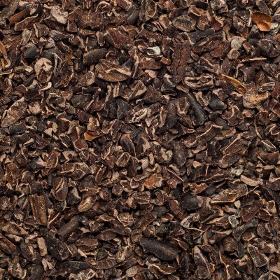
NATURELL AB
Sweden
Energy 2485 Kj,605 Kcal Fat Of which saturated 55 g,33.3 g Carbohydrates Of which sugar 5.5 g ,0.3 g Fibers 19 g Protein 12.4 g Salt 0.03 g
Request for a quote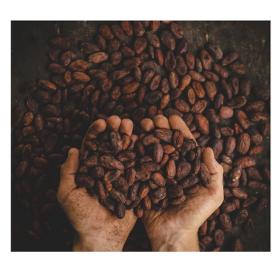
BERG TRADING COMPANY
Netherlands
We are suppliers of BEST QUALITY Cocoa Beans and looking for serious buyers in need of our products, contact with us for more details. High grade dried raw cocoa beans for sale high quality cocoa beans producing beans with the strongest flavour raw sun-dried cocoa beans a) moisture: 5.5% - 6.2% maximum b) foreign matters: 1.29% maximum c) beans count: 91 to 99 beans/kg d) broken beans / defective: 0.7% - 0.8% maximum 100grms equal 92, 17 beans, cut -test 300beans: moisture: 7, 64% insect damaged beans: 0% slaty beans: 4, 67% violet beans: 2, 00% white sports: 3, 00% mouldy beans: 6, 67% typical cocoa smell, no contamination or off flavour detected. -size: 90 - 100 beans/100gram. -moisture: < =7.5%. -furmentation cocoa beans: >=95%. procedures: -storing cocoa fruit 7 days. -peel and take bean then make furmentation 3 days. -dry in to the sun when it meets standard. samples available
Request for a quote
VEHGRO B.V
Germany
"History and Origins Cacao (Theobroma) was first harvested by the Olmecs in Mexico as early as 1000 B.C. At that time it was mainly used for fortifying drinks. Over the years, the Mayas and the Aztecs adopted this use in their cultures. Cocoa became part of ceremonial rituals and cocoa beans were a means of payment. In the 16th century, the Spanish brought cocoa to Europe. In the mid-17th century, it became a popular drink. Cocoa trees were introduced to Asia and West Africa through colonies of various European countries, as there was a rising demand for chocolate in Europe. The cocoa bean is the raw material used in the production of chocolate. These cocoa beans originate from the tropical climates of South America (Ecuador). The Theobroma cacao tree is sacred to the Mayans and Aztecs. The cacao beans from the tree are harvested by hand and the raw beans are then cleaned in natural water and selected for the best quality. This process ensures that the nutritio…"
Request for a quote
VEHGRO B.V
Germany
"History and Origins Cacao (Theobroma) was first harvested by the Olmecs in Mexico as early as 1000 B.C. At that time it was mainly used for fortifying drinks. Over the years, the Mayas and the Aztecs adopted this use in their cultures. Cocoa became part of ceremonial rituals and cocoa beans were a means of payment. In the 16th century, the Spanish brought cocoa to Europe. In the mid-17th century, it became a popular drink. Cocoa trees were introduced to Asia and West Africa through colonies of various European countries, as there was a rising demand for chocolate in Europe. The cocoa bean is the raw material used in the production of chocolate. These cocoa beans originate from the tropical climates of South America (Ecuador). The Theobroma cacao tree is sacred to the Mayans and Aztecs. The cacao beans from the tree are harvested by hand and the raw beans are then cleaned in natural water and selected for the best quality. This process ensures that the nutritio…"
Request for a quoteDo you sell or make similar products?
Sign up to europages and have your products listed

VEHGRO B.V
Germany
"History and Origins Cacao (Theobroma) was first harvested by the Olmecs in Mexico as early as 1000 B.C. At that time it was mainly used for fortifying drinks. Over the years, the Mayas and the Aztecs adopted this use in their cultures. Cocoa became part of ceremonial rituals and cocoa beans were a means of payment. In the 16th century, the Spanish brought cocoa to Europe. In the mid-17th century, it became a popular drink. Cocoa trees were introduced to Asia and West Africa through colonies of various European countries, as there was a rising demand for chocolate in Europe. The cocoa bean is the raw material used in the production of chocolate. These cocoa beans originate from the tropical climates of South America (Ecuador). The Theobroma cacao tree is sacred to the Mayans and Aztecs. The cacao beans from the tree are harvested by hand and the raw beans are then cleaned in natural water and selected for the best quality. This process ensures that the nutritio…"
Request for a quote
VEHGRO B.V
Germany
"History and Origins Cacao (Theobroma) was first harvested by the Olmecs in Mexico as early as 1000 B.C. At that time it was mainly used for fortifying drinks. Over the years, the Mayas and the Aztecs adopted this use in their cultures. Cocoa became part of ceremonial rituals and cocoa beans were a means of payment. In the 16th century, the Spanish brought cocoa to Europe. In the mid-17th century, it became a popular drink. Cocoa trees were introduced to Asia and West Africa through colonies of various European countries, as there was a rising demand for chocolate in Europe. The cocoa bean is the raw material used in the production of chocolate. These cocoa beans originate from the tropical climates of South America (Ecuador). The Theobroma cacao tree is sacred to the Mayans and Aztecs. The cacao beans from the tree are harvested by hand and the raw beans are then cleaned in natural water and selected for the best quality. This process ensures that the nutritio…"
Request for a quote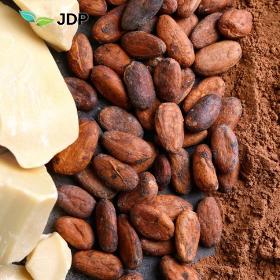
JUST DIFFERENT PEOPLE,S.L.
Spain
Deodorized cocoa butter also available
Request for a quote
COCOA HUB
United Kingdom
Region and Country St. Mary, Clarendon, Hanover and West Kingston, Jamaica Story Jamaica’s cocoa history stretches back over 350 years. The Spaniards introduced early Mesoamerican cacao to the island. In 1655 the island was taken over by the British, and Jamaica soon became their main supplier of cacao. The British are credited for having democratized cacao in Europe by opening chocolate houses and coffee shops were Jamaican cocoa brews would be served along with coffee, drinks and smokes. From that moment on, cacao was no longer an exclusive drink for the French and Spanish nobility. These beans are produced by organized farmers from three different parishes. Each parish has its own centralized post harvesting facility.
Request for a quote
COCOA HUB
United Kingdom
Region and Country Baracoa, Guantánamo, Northeast Cuba Story Cacao was introduced at the beginning of the 19th century by French colonists who fled from the revolution of independence in Haiti. They started growing coffee and cacao on the island. The breeds introduced are thought to have originated from the Atlantic coast of Mesoamerica. This cacao comes from the area of Baracoa in the Guantánamo province in the Northeast of Cuba. Baracoa lies on the Bay of Honey (Bahía de Miel) and is surrounded by a wide mountain range (including the Sierra del Purial), which causes it to be quite isolated. Baracoa is nowadays not only a cacao growing region, but it is also Cuba’s main chocolate manufacturing area.
Request for a quote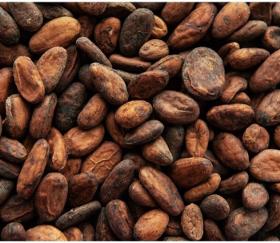
COCOA HUB
United Kingdom
Region and Country Tumaco, Nariño Department, Colombia Story Once known for its Criollo cacao varieties, Colombia gradually replaced these with modern hybrids to foster productivity and hardiness while maintaining interesting flavours. Nowadays, Colombia is actively seeking to bring cacao to the same legendary levels as its coffee. Organized cacao producer groups and the government have been supporting efforts to plot genetic varieties in the country, to improve genetic stocks and their post harvesting processes. Tumaco, a region in the South Pacific of Colombia, has been one of the most affected areas by the presence of paramilitary groups and coca cultivation in the country. Cocoa offers the local population a means to improve their livelihoods through a fair and sustainable income. Through cocoa, the people seek a future free of violence and other problems related to the cultivation of illicit crops.
Request for a quote
COCOA HUB
United Kingdom
Region and Country The Kilombero Valley, Morogoro Region, Tanzania Kilombero is bordered on one side by the Udzungwa mountains, part of which is protected by a national park. Story The founders of Kokoa Kamili were professionals in international development who were frustrated with the top-down approach of many organisations. They decided that the most direct form of benefit for the communities they work with would be to pay high prices for their produce. The farmers would then be able to decide for themselves how to best use this extra income. Farmers receive on average about 25% more pay for their cacao from Kokoa Kamili. Additionally, Kokoa Kamili distributes seedlings to farmers as donations or for a low cost and provides farmer training to help increase both the yields and the quality of the cacao they grow
Request for a quote
COCOA HUB
United Kingdom
Region and Country Markham District, Morobe Province, Papua New Guinea Story The Markham River valley is a wide, sparsely populated area that encompasses a considerable amount of level agricultural land in the lower reaches. Once an area exclusively dedicated to cocoa plantations, it has also been developed for peanut cultivation and cattle farming. Markham Organic Cocoa organizes exports for smallholder cocoa and coffee farmers in the area. The producers cultivate organic cocoa by default but are not certified by an official body. There are 35 small local fermentaries to which these farmers are affiliated. By exporting through Markham Organic, farmers share directly in the profits of their sales without going through middlemen. The first overseas export ever of these farmers was purchased by Daarnhouwer and was widely covered by local media as an example of how farmers can improve their income by becoming a part of local farmer organizations.
Request for a quote
COCOA HUB
United Kingdom
Region and Country Dak Lak Province, Central Highlands, Vietnam Story Even though cacao was introduced to Vietnam in the late 1800’s, it wasn’t until the 21st century that it started to be cultivated on a more professional level. Cocoa is currently grown in Vietnam by more than 12,000 farmers who typically cultivate on plots of 1 to 3 hectares. Coconut and fruit trees such as pomelo, banana and longan are also grown on the plots. Anh Em Cacao Co. was founded in 2017 by two school friends – Truong Minh Thang and Nguyen Duy Thong – who share a passion for cacao and chocolate. After realizing that the quality of the cocoa produced in Dak Lak could be improved, they did research on microbial biodiversity and post harvesting processes to optimize the flavour potential of the beans. This cocoa would become the basis for some of the award winning chocolate Truong and Nguyen started to produce through their brand Tbros.
Request for a quote
COCOA HUB
United Kingdom
Region and Country Alto Beni, Bolivia Story In Bolivia, cocoa is found naturally in the forests of Beni, Cochabamba and northern La Paz. These beans are supplied by El Ceibo. This is a second level cooperative, founded in 1977 by 12 grassroot cooperatives. El Ceibo brings together more than 1200 small producers dedicated to the cultivation of organic cocoa in the Alto Beni region. Since 1977 it has dedicated its efforts to improving the livelihoods of its associates. Since many years, El Ceibo in collaboration with PIAF (Program for implementation of Agro Ecology and Forestry) have promoted the cultivation of cocoa in agroforestry plantation systems, growing cocoa along fruit crops, medicinal plants and timber. Currently, it’s leading the way as an example in Bolivia to cooperatives dedicated to organic agriculture. An important pillar in the strategy of El Ceibo for the coming years is to engage youth in the cooperatives to guarantee succession.
Request for a quoteResults for
Cocoa raw - Import exportNumber of results
16 ProductsCompany type
